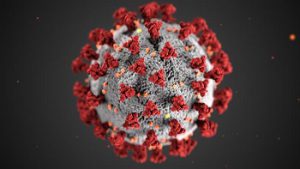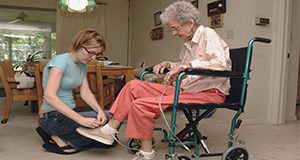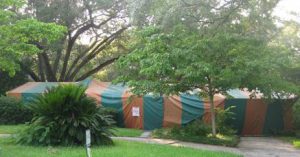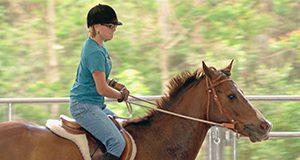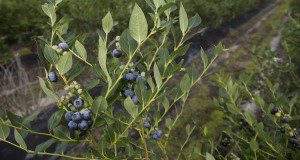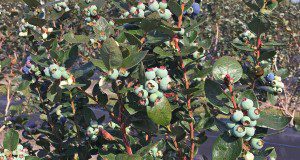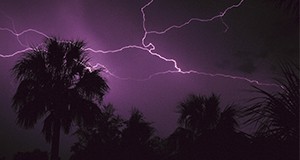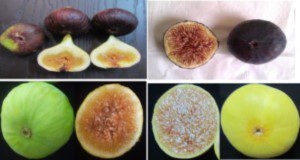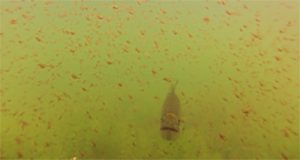
Recruitment, the process by which small fish transition to older, larger life stages, is probably the most important process that regulates populations of fish, but it is complicated to understand. This 6-page fact sheet written by Edward V. Camp, Robert N. M. Ahrens, Angela B. Collins, and Kai Lorenzen and published by the UF/IFAS Program in Fisheries and Aquatic Sciences, School of Forest Resources and Conservation explains the recruitment process in fish populations and why recruitment is so important to fisheries science and management.
https://edis.ifas.ufl.edu/fa222
Brown Dog Tick, Rhipicephalus sanguineus Latreille (Arachnida: Acari: Ixodidae)
The brown dog tick is unusual among ticks in that it can complete its entire life cycle indoors as well as outdoors. Brown dog tick infestations can develop in dog kennels and residences, where populations can reach dramatic levels and cause dog diseases. This 6-page fact sheet written by and published by the UF/IFAS provides the distribution, description and identification, life cycle, and management of the brown dog tick as well as its hosts and the medical and veterinary significance of this troublesome pest.
https://edis.ifas.ufl.edu/in378
Is Coronavirus an Issue in Produce Production?
CDC, FDA and USDA have no reports at this time of human illnesses that suggest coronavirus can be transmitted by food or food packaging. Research on similar viruses, such as SARS and influenza, show risk of transmission from food is very low. While information on if or how long virus persists on surfaces is minimal, risk of foodborne transmission is low and should not be of concern. This flyer, written by Natalie Seymour, Mary Yavelak, Candice Christian, and Ben Chapman (NC State University Extension), provides answers to some frequently asked questions about coronavirus and produce production. Published by the UF/IFAS Food Science and Human Nutrition Department.
https://edis.ifas.ufl.edu/fs351
Is Coronavirus a Concern on Fresh Produce?
CDC, FDA and USDA are not aware of any reports at this time of human illnesses that suggest
coronavirus can be transmitted by food or food packaging. However, it is always important to
follow good hygiene practices (i.e., wash hands and surfaces often, separate raw meat from other
foods, cook to the right temperature, and refrigerate foods promptly) when handling or preparing foods. This flyer, written by Natalie Seymour, Mary Yavelak, Candice Christian, and Ben Chapman (NC State University Extension), provides answers to some frequently asked questions about coronavirus and fresh produce. Published by the UF/IFAS Food Science and Human Nutrition Department.
https://edis.ifas.ufl.edu/fs350
Pi bon fason pou granmoun (kap pran swen lot moun) lave men yo
Lave men enpòtan pou redwi transfè jèm mikwòb ki soti nan matyè fekal oswa poupou pou ale nan bouch, ki ka lakoz maladi. Timoun piti ak granmoun aje yo gen mwens kapasite pou yo konbat jèm mikwòb pase lòt kategori moun. Kòm moun kap pran swen moun ou ka ede diminye risk maladi ki ka pwopaje nan anviwònman ki gen anpil moun lè w swiv bon jan metòd pou lave men w. This is the Haitian Creole version of FCS8782, Proper Hand Washing for Caregivers. Written by Amy Simonne, translated and reviewed by Emmanuel Jean Claude Duvalsaint and Nicole Monval, and published by the UF/IFAS Department of Family, Youth and Community Sciences, March 2020.
https://edis.ifas.ufl.edu/fy1490
Pi bon fason pou timoun piti (ki gen laj pou ale lekol) lave men yo
Jèm yo ka kache anba zong ki long ak nan men ki sal. Kenbe zong ou kout epi lave men w souvan, se aksyon ki pi enpòtan ou ka poze pou anpeche jèm mikwòb fè w tonbe malad. Jèm ki bay maladi tankou larim, grip, dyare, ak vomisman ka vinn nan men w lè w manyen objè ki nan alantou w. Moun, animal domestik, manje kri, jwèt, tè, ak tout objè nou itilize plizyè fwa pa jou, yo tout ka gen jèm mikwòb sou yo. Lè w lave men w byen li ede retire jèm mikwòb nan men w. This is the Haitian Creole version of FCS8783, Proper Hand Washing for School Children. Written by Amy Simonne, translated and reviewed by Emmanuel Jean Claude Duvalsaint and Nicole Monval, and published by the UF/IFAS Department of Family, Youth and Community Sciences, March 2020.
https://edis.ifas.ufl.edu/fy1491
Termite Prevention and Control
This 16-page guide written by F. M. Oi, J. Davis, J. McConnell, J. Corbus, N. Nelson, and M. Atkinson and published by the UF/IFAS Entomology and Nematology Department is intended to help homeowners make informed choices about the best termite protection for their homes.
https://edis.ifas.ufl.edu/in1277
COVID-19 and Food Safety FAQ: Is Coronavirus a Concern with Takeout?
These flyers, written by Natalie Seymour, Mary Yavelak, Candice Christian, and Ben Chapman (NC State University Extension), provide quick, digestible information regarding prevention of COVID-19 and procedures for food service, grocery stores, and other food-related businesses. This flyer in particular provides guidance regarding takeout and COVID-19. Published by the UF/IFAS Food Science and Human Nutrition Department.
https://edis.ifas.ufl.edu/fs349
COVID-19 and Food Safety FAQ: Is Coronavirus a Concern at Grocery Stores?
These flyers, written by Natalie Seymour, Mary Yavelak, Candice Christian, and Ben Chapman (NC State University Extension), provide quick, digestible information regarding prevention of COVID-19 and procedures for food service, grocery stores, and other food-related businesses. This flyer in particular provides guidance regarding food safety at grocery stores. Published by the UF/IFAS Food Science and Human Nutrition Department.
https://edis.ifas.ufl.edu/fs348
Navigating the Unprecedented: Working Remotely Unexpectedly
Working from an alternative location can be a daunting adjustment. Ensuring personal well-being and productivity through unexpected times takes a proactive partnership between employers and employees. This new 3-page publication of the UF/IFAS Department of Agricultural Education and Communication provides some best practices for personal well-being and productivity while working remotely. Written by Megan Stein and Matthew Sowcik.
https://edis.ifas.ufl.edu/wc355
Navigating the Unprecedented: Leading Remotely Unexpectedly
Leaders tend to have a set of assumptions or ideas about how to do their job. As the world moves quickly to social distancing and remote work, leaders rely on their assumptions to navigate this new landscape. Different frames of reference can act as a road map allowing leaders to take the first steps into the unknown. This new 4-page article utilizes these Bolman and Deal’s four frames addressing different aspects of leadership to provide best practices for leading in a remote work environment. Written by Matthew Sowcik and Megan Stein, and published by the UF/IFAS Department of Agricultural Education and Communication.
https://edis.ifas.ufl.edu/wc354
Insect Bite Hypersensitivity in Horses
Allergic skin disease is a very common cause of itching in horses. The itching can severely affect the horse’s quality of life, leading to the horse wounding itself by biting or scratching, and it can reduce the utility of the horse. This 4-page fact sheet written by Rosanna Marsella, Nicky Craig, Carissa Wickens, and Samantha Brooks and published by the UF/IFAS Department of Animal Sciences explains how to manage allergic skin disease, control itching, treat secondary infections, and prevent the insect bites in the first place.
https://edis.ifas.ufl.edu/an359
Calendar for Southern Highbush Blueberry Management in Florida
Southern highbush blueberries (SHB) are commercially grown throughout Florida in both deciduous and evergreen systems. This calendar addresses general management requirements on a monthly basis for conventional (nonorganic) systems and should be used in coordination with other UF/IFAS EDIS publications. This new 7-page article, published by the UF/IFAS Horticultural Sciences Department, was written by Douglas A. Phillips, Jeffrey G. Williamson, Philip F. Harmon, Oscar E. Liburd, and Peter J. Dittmar.
https://edis.ifas.ufl.edu/hs1363
Evergreen Production System for Southern Highbush Blueberries in Florida
In central and south-central Florida, many southern highbush blueberries (SHB) are grown in an evergreen system, in which the plants do not go dormant, and are managed to retain their leaves from the previous year through harvest the following spring to support early flowering and fruit set. The evergreen system has also been used under tunnels in north-central Florida. This new 3-page publication of the UF/IFAS Horticultural Sciences Department, written by Douglas A. Phillips, Jeffrey G. Williamson, and Patricio R. Munoz, provides an overview of the evergreen production system for SHB in Florida.
https://edis.ifas.ufl.edu/hs1362
Ocean Acidification: Calcifying Marine Organisms

Rising atmospheric carbon dioxide concentration leads to ocean acidification and threatens coastal and marine ecosystems and organisms. This 4-page fact sheet written by Joseph Henry, Joshua Patterson, and Lisa Krimsky and published by the UF/IFAS School of Forest Resources and Conservation, Program in Fisheries and Aquatic Sciences explores the impacts of ocean acidification on calcification, the process corals, bivalves, echinoderms, and planktonic organisms use to build their shells and skeletons. Understanding how ocean acidification affects calcification is important for scientists seeking to determine the real-world implications and impacts of ocean acidification on some of the most important species in the marine environment.
https://edis.ifas.ufl.edu/fa220
Ocean Acidification: Fish Physiology and Behavior
Increased atmospheric carbon dioxide has led to increased levels of dissolved carbon dioxide in the oceans and acidified ocean water, which could have direct effects on the physiology and behavior of fishes. This 5-page fact sheet written by Joshua Patterson, Lisa Krimsky, and Joseph Henry and published by the UF/IFAS School of Forest Resources and Conservation, Program in Fisheries and Aquatic Sciences will summarize the current state of our understanding on the topic, with special emphasis on Florida fishes. It will also address current challenges in understanding the real-world effects of a complex global process using data largely collected on isolated fish in laboratory experiments.
https://edis.ifas.ufl.edu/fa219
Recommendations for Control and Mitigation of Laurel Wilt and Ambrosia Beetle Vectors in Commercial Avocado Groves in Florida
The lethal laurel wilt epidemic affecting avocado trees in Florida is caused by a fungal pathogen-ambrosia beetle complex (LW-AB). The death of over 120,000 commercial avocado trees in Florida may be attributed to LW-AB. Recommendations for control and mitigation of this epidemic are needed to guide commercial producers in their decision-making process. This new 8-page publication of the UF/IFAS Horticultural Sciences Department outlines the LW-AB epidemic, provides information on the pathogen and ambrosia beetle vectors, provides a brief outline of current research findings, and offers recommendations for the control and mitigation of LW-AB. Written by Jonathan H. Crane, Daniel Carrillo, Edward A. Evans, Romina Gazis, Bruce Schaffer, Fredy Ballen, and Jeff Wasielewski.
https://edis.ifas.ufl.edu/hs1360
Harmonizing the Assessment of the Impacts of Natural Disasters to Florida Agriculture
UF/IFAS Extension has developed an online survey instrument to improve collection of data on losses to Florida agricultural businesses following disasters and to assist agricultural stakeholders in times of disaster. Florida’s agricultural sector frequently experiences substantial adverse impacts during and after natural disasters. Depending on the size and scope of the disaster, agricultural business owners and employees could suffer reduced earnings, financial insecurity, and social stress, and consumers could experience temporary food insecurity. Timely provision of credible estimates of agricultural losses after a disaster is critical to an official disaster declaration and to timely provision of disaster relief and recovery, but collecting data on agricultural losses can present challenges. This 15-page fact sheet written by Christa Court, Alan Hodges, and Matt Lollar and published by the UF/IFAS Food and Resource Economics Department describes the online survey instrument, explains how to use it, and communicates how the data collected will be used in analyses of economic losses.
https://edis.ifas.ufl.edu/fe1075
El higo
El higo (Ficus carica L; familia Moracea) se originó en los trópicos del Viejo Mundo: Asia Menor y la Región Mediterránea. En el Mediterráneo, el higo se ha cultivado desde el año 5,000 a.C. Muchos cultivares de higos fueron importados del Viejo Mundo en los últimos 50 años. Actualmente, sin embargo, no hay programas de mejoramiento de higos en los Estados Unidos, y de entre al menos 60-100 cultivares de higos nombrados, relativamente pocos se cultivan en el sureste de los Estados Unidos.
This is the Spanish version of HS27, The Fig. (https://edis.ifas.ufl.edu/mg214). Written by Ali Sarkhosh and Peter C. Andersen, translated by Luis Jonathan Clavijo Herrera, and published by the UF/IFAS Horticultural Sciences Department.
https://edis.ifas.ufl.edu/mg459
COVID-19 FAQ for Community Gardens: Steps for Garden Managers and Gardeners
These flyers, written by Natalie Seymour, Mary Yavelak, Candice Christian, and Ben Chapman (NC State University Extension), provide quick, digestible information regarding prevention of COVID-19 and procedures for food service, grocery stores, and other food-related businesses. This flyer in particular provides guidance for managing community gardens with regards to COVID-19. Published by the UF/IFAS Food Science and Human Nutrition Department.
https://edis.ifas.ufl.edu/fs342

